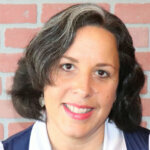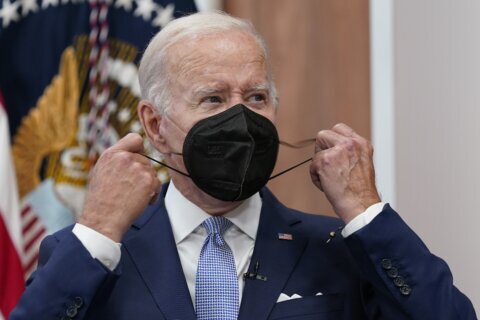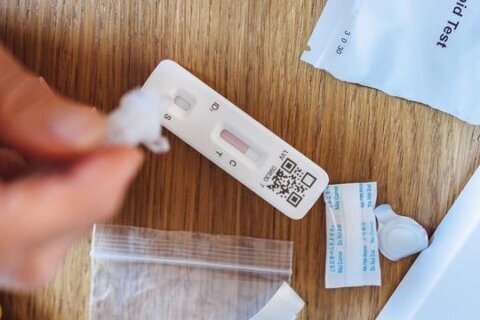Experts at Johns Hopkins held a discussion on Sunday sharing insights and warnings as regions go through phases of reopening amid the coronavirus pandemic.
Here are some of the takeaways.
Could the coronavirus be a seasonal disease?
“I think some people were talking about [a] second wave in the fall,” said Dr. Tom Inglesby, who leads the Center for Health Security at the Johns Hopkins Bloomberg School of Public Health. “I think that’s important partly because there may be a lot of new activity in the fall, people going back to schools and universities.”
Not to mention there will be an overlap with the flu season sometime in the fall, which is another worry. But he said that may be looking too far ahead.
“We should be thinking about what’s going to be happening in the end of May, June, July, August,” Inglesby said. “Because this disease, at this point, we don’t have a lot of evidence that it will respect seasonal change. And it is quite possible that the patterns that we’re seeing now won’t be changed much by summertime.”
He believes people will need to constantly keep up current efforts to stop the spread.
Reopening businesses
Business owners and managers need to look closely at the particular risks their companies face, said Crystal Watson, senior scholar with the Center for Health Security — whether it be customers coming in, employees in close contact or traveling employees.
“They need to look at what modifications they could make to their business operations and what mitigation measures that their employees and their customers could take, like wearing personal protective equipment, for example, or hand hygiene,” Watson said. “Our organization, the Center for Health Security, has released recently an operational tool kit for businesses to help conduct a risk assessment for themselves to understand their baseline risk and then what steps they might take to reduce that risk.”
Summer vacation and the new school year
Watson said the decision to reopen schools in the fall is a very tough call to make: Children, after all, are not very good at social distancing.
“There is a lot we don’t know about how children are infected, if they transmit to the same level as adults. But we know that there is going to be some risk to children and to their caretakers and to their families when we reopen schools. I think it’s going to be hard to avoid that,” she said.
She said the best thing we can do is reduce transmission rates over the summer, so there is less risk of contracting the virus in the fall when schools are set to reopen.
“It’s really important to talk to your kids, if they’re able to understand what’s going on, to kind of reinforce the need to take these physical distancing measures and to have more activities outdoors where you can stay six feet apart or more,” she said, “because being outdoors is good for our health and it can allow us to do that distancing more effectively. “
Contact tracing
Finding out more quickly who may have been in contact with someone who has the virus will also go a long way toward stopping the spread and making it easier to reopen, according to Watson.
“Authorities can then reach out to those people, notify them that they may have been exposed and ask them to quarantine for 14 days, which is kind of the upper bound of the incubation period of the virus,” she said. “And so we can break chains of transmission there and start to slow transmission at a population level.”
Inglesby pointed to countries such as New Zealand, Iceland and Singapore, which have been able to use contact tracing to control outbreaks.
“New Zealand is doing consistently very well. They’ve been able to drive down the number of cases that come from unknown sources down to 2% … in many states [in the U.S.], that number may be 50%, 60%, 70%.”
Personal responsibility
At the end of the day, Inglesby said, the ability to reopen and stay open will come down to personal responsibility. The more people follow safety steps such as social distancing, wearing a mask, avoiding gatherings and telecommuting if possible, the more the country can reduce the transmission of the virus.
If distancing guidelines aren’t followed, it’s entirely possible another shutdown could be considered, he said.
“If there appears to be a broad surge in cases across the state and numbers are going up and hospital beds are being used increasingly to care for COVID patients and ventilators are, again, becoming in shorter supply, then I think governors would have a difficult choice to make and may need to reimpose some level of social distancing, because we don’t have other large interventions that we can use at this point,” Inglesby said. “And so I think what all of us should be doing is working as hard as we can to try and prevent that from having to happen.”
- Sign up for WTOP alerts
- Latest coronavirus test results in DC, Maryland and Virginia
- Despite setback, DC on track for Phase 1 of reopening
- How should I clean and store my face mask?
- Travel in the ‘new normal’: RVs, camping, one-tank trips will become popular, expert says
- Coronavirus resources: Get and give help in DC, Maryland and Virginia
Looking for more information? D.C., Maryland and Virginia are each releasing more data every day. Visit their official sites here: Virginia | Maryland | D.C.








